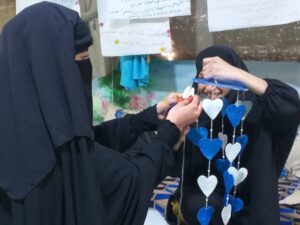Executive Summary
Between 2017 and 2018, controlling powers in Syria have shifted dramatically. Syrian Democratic Forces (SDF) supported by the US-international coalition in Northeast Syria (NES) expelled the Islamic State in Iraq and Syria (ISIS) from the region. The Government of Syria (GoS) reclaimed vast territories from opposition forces. Meanwhile, Turkey and its allied opposition armed groups concluded two military operations to take control of northern parts of the country, specifically the Aleppo northern countryside which runs alongside the borders with Turkey. In the northwest, the establishment and expansion of the Hay’at Tahrir Al-Sham (HTS) jihadist alliance of armed forces have shifted political and governance structures in the area. These developments have radically changed the territorial map of Syria since 2016, with direct and indirect effects on the population and organizational structure of Syria at large. No doubt, civil society organizations were severely impacted by these developments.
This report sheds light on the status of Syrian CSOs in different areas of control based on the new geopolitical lines formed as a result of the military developments. It is based on data collated through a mapping of civil society organizations with active offices in Syria or neighboring countries conducted between August and November 2018. In total 514 CSOs were mapped during this exercise. While Syrian CSOs have been growing in number in certain areas, other regions witnessed a setback in civic actions due to displacement or changes in the available space to operate.
Despite the higher tendency amongst CSOs towards professionalization and institutionalization in terms of seeking registration or expanding organizational structures, Syrian CSOs remain to a greater extent small in size and reactionary in their scope of work. A detailed look into the quantitative data produced through this mapping exercise shows that most Syrian CSOs still operate with small teams. Seventy-seven percent of mapped organizations have less than 50 staff members and depend on short-term funding and emergency-triggered responses. Moreover, despite intensive efforts in the fields of capacity building and civil society support, Syrian CSOs in general still lack the capacity to carry out interventions with optimal efficiency and effectiveness.
Recommendations
7 Recommendations for Syrian Organizations
Internal development
Syrian CSOs are encouraged to seek opportunities and resources to define and develop their missions, strategies, organizational structure, and scope of work to enhance their adaptability to contextual changes and intervention capacity.
Capacity building
Investing in systematic capacity-building programs on both the individual and structural levels is recommended to Syrian CSOs. This might include training for staff in their respective fields of work as well as training in the CSO’s area of focus, accompanied by general training on organizational structures and management, development of customized policies and procedures for various departments.
Increase level of fundraising efforts, self-sufficiency policies
Syrian CSOs are recommended to increase efforts on fundraising that consider sustainable funding approaches such as self-sufficiency policies, income-generating programs, and funding source diversification.
Seek operational and core funds
CSOs are also encouraged to revisit their budgeting policies to account for internal needs and expenses. Syrian CSOs are recommended also to put more efforts into seeking operational and core funds where possible alongside project-based funds, that are directed to the internal development and sustainability for the CSO.
Increase media and outreach efforts
Communication is vital to connect to beneficiaries, local communities, local and national government entities as well as other local and international CSOs and NGOs. CSOs are recommended to emphasize media and outreach efforts to facilitate this connection.
Enhance participation by women
A gender imbalance is currently at play in Syrian CSOs. Organizations are encouraged to develop internal policies to ensure gender-sensitive planning and project design. Participation by women in decision-making at the leadership level should also be facilitated.
Advocacy and alliances
Syrian CSOs are recommended to seek collaboration and coordination with their peers to share information and experiences. Advocacy and lobbying efforts should then be directed towards joint works and forging alliances to ensure the greater benefit of available resources and higher impact of actions.


